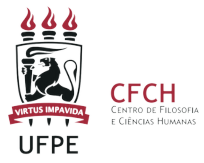The epistemic updates of Miltonian thought
DOI:
https://doi.org/10.51359/2594-9616.2019.244092Keywords:
Milton Santos, Epistemology, Geographic ThoughtAbstract
When dealing with epistemology, roughly speaking, we are referring to thinking of systemic and coherent thinking about a conception of the world, that is, we glimpse “philosophically”, an explanatory unity of phenomena, clearly including geographical events; socio-spatial. In this sense, Geographer Milton Santos sought, throughout his work, and taking into account the diverse historical moments, the referred explanatory unit, through the constant mutations of technical phenomena, under the aegis of the various economic and social formations, which shaped and shape the numerous socio-spatial or territorial configurations. It was in this light that, in the late eighties and early nineties, I carried out my master's dissertation, whose name is alluded to in thetitle of this essay. Therefore, for the sake of a better understanding, the aforementioned author in numerous of his works, in particular "The Nature of Space: Technique and Time: Reason and Emotion" (which had not yet been published at the time of the dissertation), but which can be very well fitted into this essay, it deals with four time / spatial frames, shaped by technique: The pre-technical period, the technical period, the technical-scientific period and the informational technical-scientific period. Following this script, I will select some passages of my dissertation, showing the operability of these theoretical / conceptual conceptions and, above all, reaffirming the epistemic character of a thinker who bequeathed a work that remains current to the unveiling of the numerous socio-spatial phenomena in the midst of. this increasingly “perverse” globalization.
References
ANDRADE, Manuel Correia de. A Terra e o Homem no Nordeste. São Paulo: Ciências Humanas, 1980.
ANDRADE, Manuel Correia de. Poder Político e Produção do Espaço. Recife: Massangana, 1984
CASTRO, Josué de. Geografia da Fome. Rio de Janeiro: Antares, 1984.
COMPANHIA DE DESENVOLVIMENTO DO VALE DO SÃO FRANCISCO –CIDEVASF. 3ª DR. Relatório de avaliação Ex-Post do Projeto de Irrigação Senador Nilo Coelho. Petrolina, 1989.
FUKUYAMA, FRANCIS. O Fim da História e o Último Homem. Rio de Janeiro: Ed. Rocco, 1992.
GEORGE, Pierre. O Homem na Terra. A Geografia em Ação. Lisboa : Edições 70, 1993.
MARX, Karl. Para a Crítica da Economia Política: Salário, Preço e Lucro: Rendimentos e suas Fontes: A Economia Vulgar. São Paulo: Abril Cultural, 1982.
MELO, Mário Lacerda de. Áreas de Exceção da Paraíba e dos Sertões de Pernambuco. Recife: SUDENE, PSU, SER, 1988.
MORIN, Edgar. O Método 5.A Humanidade da Humanidade. A Identidade Humana. Porto Alegre: Sulina, 2002.
MÜLLER, Geraldo. Complexo Agroindustrial e Modernização Agrária. São Paulo: Hucitec, 1989.
RAFFESTIN, Claude. Por uma Geografia do Poder. São Paulo: Ed. Ática, 1993.
SÁ, Alcindo José de. Espaço e Subordinação. O Caso de um Perímetro Irrigado no SubmédioSão Francisco. Recife, 1991. Dissertação (Mestrado em Geografia) –Departamento de Ciências Geográficas, Centro de Filosofia e Ciências Humanas, UFPE.
SANTOS, Milton. A Natureza do Espaço. Técnica e Tempo. Razão e Emoção. São Paulo: Ed. Hucitec, 1996.
SANTOS, Milton. Metamorfoses do Espaço Habitado. Fundamentos Teóricos e Metodológicosda Geografia. São Paulo: Ed. Hucitec, 1988.
SILVA, José Graziano da (org.). Estrutura Agrária r Produção de Subsistência na AgriculturaBrasileira.2ª ed. São Paulo, 1978.
Downloads
Published
How to Cite
Issue
Section
License
Copyright (c) 2021 Alcindo José de Sá

This work is licensed under a Creative Commons Attribution 4.0 International License.
Authors who publish with this journal agree to the following terms:- Authors retain copyright and grant the REVISTA ENSINO DE GEOGRAFIA (RECIFE) right of first publication with the work simultaneously licensed under a Creative Commons Attribution NonCommercial International 4.0 (CC BY-NC) that allows others to share the work with an acknowledgement of the work's authorship and initial publication in this journal.
- Authors are able to enter into separate, additional contractual arrangements for the non-exclusive distribution of the journal's published version of the work (e.g., post it to an institutional repository or publish it in a book), with an acknowledgement of its initial publication in this journal.
- Authors are permitted and encouraged to post their work online (e.g., in institutional repositories or on their website) prior to and during the submission process, as it can lead to productive exchanges, as well as earlier and greater citation of published work.



